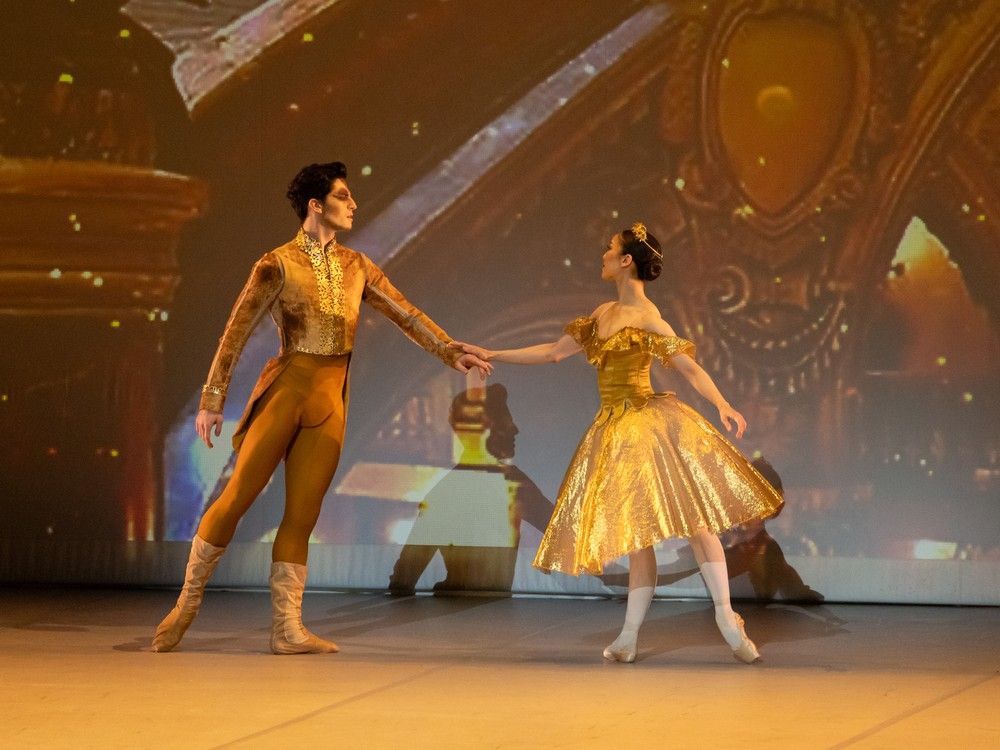Math lessons from deepfakes of Drake, other celebrities on TikTok raise concerns about misinformation

Sisters Leanne and Natasha Manikavasagar are no strangers to seeing AI-generated content on TikTok.
But an AI-generated deepfake video of Drake teaching trigonometry took them by surprise.
“I was shocked,” said Natasha, a Grade 9 student in Brampton Ont.
“Drake looked kind of weird, like his mouth did not match … the way he was … making hand gestures and stuff. It’s really weird,” said Leanne, a Grade 12 student.
TikTok users like @onlocklearning and @starlight_academy_x use software to manipulate the likeness of well-known figures to explain concepts in math, physics and engineering, all while mixing in slang and Gen Z references in short-form videos.
A TikTok of rapper Ice Spice explaining logarithmic functions has reached 10 million views and is one of many similar videos that have appeared on the platform this year.
While some educators see the potential for these images to raise student interest in topics such as math, they question whether they offer real learning opportunities and worry about the possibility for misinformation to spread. Others see the images as an opportunity to increase media literacy and help students learn how to spot misinformation.
Krista Muis, a professor at McGill University in Montreal, worries about the potential for misinformation.
“We know from the research that’s been done that over 60 per cent of the information on the internet is false or misleading, so that’s always a concern … whether the content is in fact accurate,” she said in an interview.
Neil Andersen, president of the Association for Media Literacy, a not-for-profit charitable organization that helps people develop an informed understanding of media and its impact, echoes this concern. But he also sees a potential learning opportunity for students of not only complex subjects but also about media literacy.
“I would invite them to pick a concept and pick some celebrities and build their own video. And in the process of that video, they would be learning physics or trigonometry, but they would also be learning about the medium.”
The TikTok tutorials garner an audience of young viewers who, beyond the initial shock, are understanding the concepts, according to the comments sections of these videos.
“Why is it actually easy tho, I haven’t learned log yet but if that’s all it actually is I’m not scared,” TikTok user @bisnip commented.
“I learned something in one minute my teacher would have taken a whole class or two to teach us,” added TikTok user @cayden.steinbock.
As someone who is always on the app, Leanne Manikavasagar agrees with the comments.
“Listening to a celebrity that’s maybe even part of Gen Z, I feel like you can understand it easier.”
‘How much do they really learn?’
For Muis, the emerging trend of AI deepfake lessons can be an effective supplementary tool to draw students’ interests, especially for individuals who face learning barriers in their education. However, she is concerned at the surface level nature of these videos.
“It may draw in others that have not necessarily felt that they belonged in mathematics,” Muis said.
“They may pay attention to these for a very short period of time, but the question is how much do they really learn from these? Does this really promote deep learning?”
While there is the potential to attract students to a subject, educational psychologists see a possible risk developing through deepfake lessons if those who see the images on TikTok start to trust or develop relationships with the AI portrayals themselves.
Miti Isbasescu, an engineering physics instructor at the University of British Columbia, sees this potential.
“You connect with your knowledge in a much more intimate way if the knowledge is being transmitted not by a professor but by someone who you actually feel close to,” Isbasescu said.
“You can develop feelings for the avatar.”
‘Truth is not part of the model’
Some see potential problems if that trust leads to a reliance on these tools, especially given how these tools are programmed to operate.
“These tools are trained on the existing information that is already out there on the internet, which means that it is inherently biased. Truth is not part of the model,” said David Gerhard, a professor and head of the department of computer science at the University of Manitoba.
“It’s not as reliable as it should be and my biggest concern is that people will become complacent. They will ask a question and get an answer and then not dig any further and that’ll be a real problem.”
AI’s influence on the classroom
For Carol Arcus, improvements in AI will require teachers to adapt their practices.
“It’s an opportunity again to teach about the media,” said Arcus, director of the Association for Media Literacy.
Arcus said AI has caused a disruption in classrooms already, offering challenges for teachers in policing academic honesty.
“We don’t even want to talk about this in the classroom,” Arcus said.
“We’re afraid of it and we don’t know what to do about it.”
Some teachers are embracing AI and integrating the technology into their classroom.
Jamie Mitchell, a high school math teacher in Burlington,Ont., sees opportunities for AI tools like ChatGPT to enhance students’ learning.
For Mitchell, AI deepfake videos are another learning opportunity for students.
“What I could see myself doing as a teacher is showcasing those videos to a class without mentioning that they’re deepfakes and using that as a gateway to talk about digital literacy, how we could use what we know to spot fakes when they show up online,” he said in an interview.
“It’s not disappearing. I think if we can teach students to use it properly, we’re doing them a service and not putting them at a disadvantage.”



